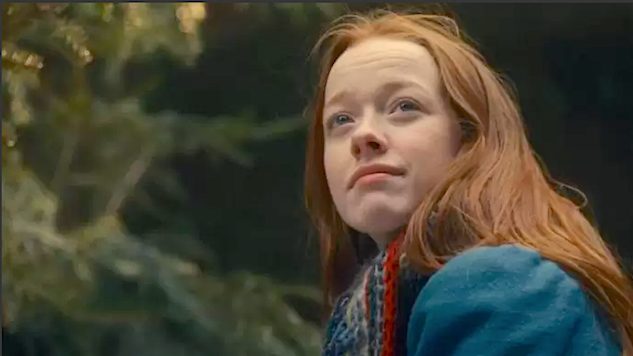When Anne with an E first premiered, I approached it with trepidation. Like any adaptation of a beloved work (I am particularly obsessed with Lucy Maud Montgomery’s Avonlea-set novels), one wonders if it will be faithful the spirit of the book. The 1980s miniseries starring Megan Followes is generally considered the definitive on-screen work, one that has stood the test of time remarkably well. PBS gave it another go a few years ago with an Anne series that ultimately felt too juvenile (but was pleasant enough), while Netflix’s series started off in what felt like the Dark Origins of Anne. That wasn’t quite right, either.
Though I wasn’t a fan of the Anne with an E’s start, I stuck with the show, which made a marked improvement in Season 2, and another leap in quality in Season 3. The change came when the show stopped trying to be Anne of Green Gables, and became its own tale of a plucky turn-of-the-century Canadian youth with big dreams and an even bigger personality. (Which is, of course, the very spirit of the books).
Season 2 also really saw the show leaning into being more inclusive in terms of stories involving characters of color, LGBT characters, and native peoples (in Season 3). There was no tokenism to the inclusions; each storyline was interwoven with the mains and have continued to be an important part of the story that Anne is telling. Is it subtle? No, nothing about this show is. And that’s ok. Teenagers are rarely subtle, and one of the things Anne with an E does best is understand who teenagers really are.
Teens (myself, many years ago, included) have always liked watching shows about exaggerated versions of ourselves, with twentysomethings playing sixteen-year-olds who are an augmented, fantasy version of teen life. But many wild-teen-fun series like 90210 and The O.C. were ultimately replaced by a grimdark era of Euphoria and 13 Reasons Why, or even the recent Dare Me, which (according to Amy Amatangelo’s review) thrives on showcasing the very worst of teen traits.
There are exceptions (as you can see in Alexis Gunderson’s extensive tracking of teen TV over the last decade), but Anne with an E is by far one of the sweetest and most triumphant. It’s also authentic, which is why it resonates for both younger viewers and ones who haven’t been teens for a long time. Yes, Anne (Amybeth McNulty) is frequently extremely annoying. She’s a teen girl—this tracks. But while she and her friends can be thoughtless, obsessive, and impulsive, they are also shown to be passionate, caring, and imbued with a boundless energy to want to set the world to rights. In the third season, alongside bigger plotlines about consent and freedom of speech, there are important smaller stories of female friendship, about asking forgiveness when you wanted to help but ended up hurting someone, of not liking yourself and taking it out on others. Anne with an E understands that being a teenager is not just complicated, it feels like every single thing that happens to you is the most important thing that has ever happened to anyone, anywhere, and no one else can possibly get it. It’s about feeling alone and isolated among a group of people who also feel alone and isolated, but occasionally, seeing that you’re all in this together and finding some strength in that.
Of note, strangely, everyone in Avonlea is (as of Anne Season 3) either 16 or 65—with a few notable exceptions. But that fact sets off a timeless “teens vs the establishment” vibe that gives the show a lot of its power (especially when some of the old guard join their cause). The show also raises the stakes on having a crush by making these kids a marriageable at 16. For better or worse, like its characters, you can feel the show barreling towards adulthood, not wanting to linger on childhood too long. But the time we’ve spent on this journey has been such a lovely one.
Netflix canceled Anne with an E because a deal with its co-producer, CBC, fell through. But perhaps there’s still hope that we can one day follow Anne and Gilbert and Diana (and Marilla and Matthew and Rachel!) into another, increasingly grown-up era with Anne of Avonlea. We need it. Anne with an E has given us a complicated, unique, and ultimately joyous portrait of teenage life, and it would be wonderful to see it take on our core group’s young adulthood with as much angst, passion, and zest for experience as it has so far.
Allison Keene is the TV Editor of Paste Magazine.
For more television talk, pop culture chat and general japery, you can follow her @keeneTVFor all the latest TV news, reviews, lists and features, follow @Paste_TV.
